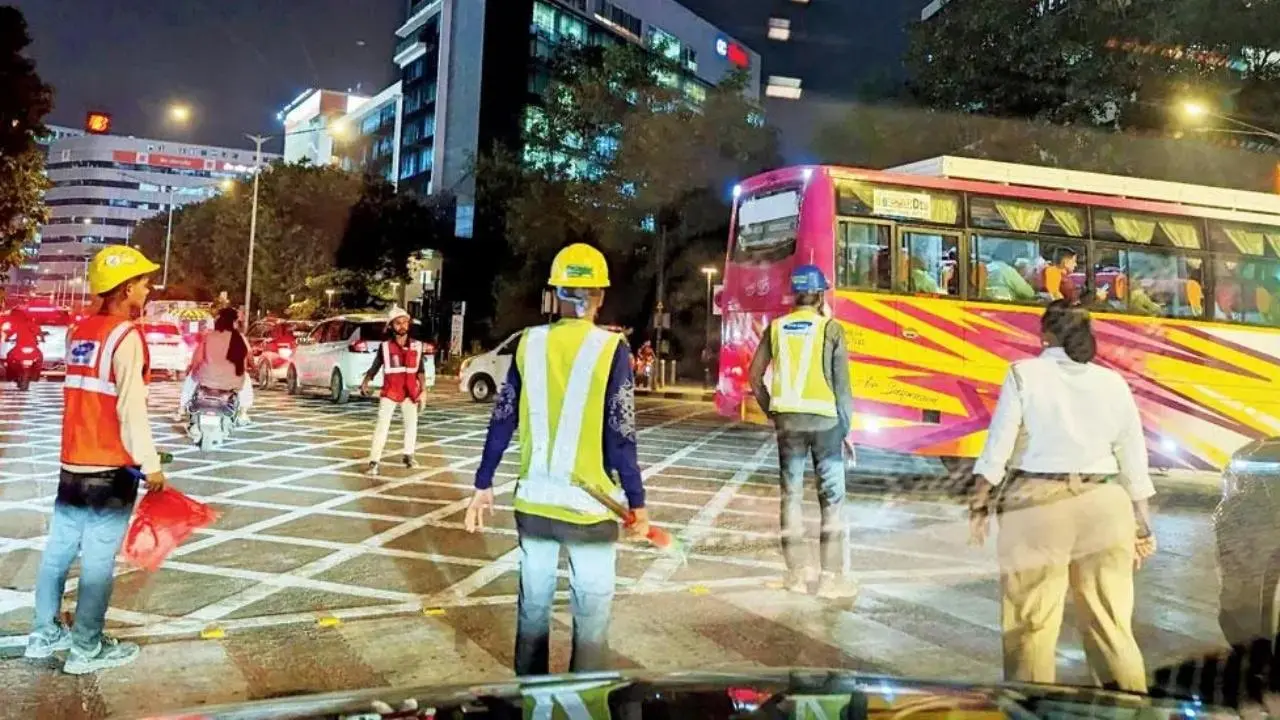Several underutilised cycle tracks across BKC will be repurposed into vehicular lanes to expand existing road widths. This conversion is projected to increase traffic capacity by 600–900 vehicles per lane, MMRDA said

Due to the shutdown of the Sion bridge, most of the traffic has been diverted towards BKC, MMRDA said. Representational Pic/File
The Mumbai Metropolitan Region Development Authority (MMRDA) on Sunday said that it has drawn a traffic decongestion plan for Bandra-Kurla Complex (BKC) and suggested wider roads, one-way traffic system, etc.
The MMRDA suggested that some changes needs to be implemented to improve traffic flow in the BKC, one of Mumbai’s busiest commercial and financial hubs.
Every day, nearly 2 lakh employees and 4 lakh visitors travel to BKC that spread across 370 hectares, traffic congestion—especially during peak hours—has emerged as a pressing challenge, it said.
Due to the shutdown of the Sion bridge, most of the traffic has been diverted towards BKC, MMRDA said.
While the BKC lanes are designed for smaller vehicles, heavy vehicles such as trucks and multi-capacity transporters are now being routed through this stretch, leading to increased congestion. To tackle this situation, both short-term and long-term measures are being implemented, it said, adding that to deal with this, MMRDA has developed a detailed traffic management plan based on current and future traffic growth, public feedback, and expert studies. The plan has been approved in a recent meeting led by the MMRDA Chairman and will be carried out in partnership with the Mumbai Traffic Police.
Converting Cycle Tracks into Traffic Lanes
Several underutilised cycle tracks across BKC will be repurposed into vehicular lanes to expand existing road widths. This conversion is projected to increase traffic capacity by 600–900 vehicles per lane. Supporting infrastructure such as streetlights, signboards, trees, bus stops, and landscaped elements will be relocated to the footpaths to facilitate the expansion.
Benefits of Cycle Track Removal
As part of this initiative, the existing carriageway will be widened by removing the cycle track, increasing lane capacity from 2+2 lanes to 3+3 lanes—an overall 50% increase. This enhancement is expected to reduce peak-hour travel time from 25 minutes to 15 minutes, saving 10 minutes, which represents a 40% reduction in travel time.
As a result, the average waiting time at signals or bottlenecks will decrease from 10 minutes to 7 minutes, saving 3 minutes—a 30% reduction in waiting time. This reduction in idling time will also lower carbon emissions. Based on a petrol car emitting approximately 170 grams of CO₂ per kilometre, and considering a 2.3 km effective time-distance saving at an average speed of 40 km/h, CO₂ emissions during waiting time are expected to drop by 30%—from 1,133 grams to 793 grams per vehicle.
The proposed transformations include:
Existing 2+2 lane (7m + 7m) with 2.7m cycle track → Expanded to 3+3 lane (9.7m + 9.7m)
Existing 2+2 lane (7m + 7m) with 1.5m cycle track → Expanded to 3+3 lane (8.5m + 8.5m)
Existing 1+1 lane (3.5m + 3.5m) with 1.5m cycle track → Expanded to 2+2 lane (5.0m + 5.0m)
Implementation of One-Way Traffic System in BKC
To streamline internal vehicular movement and reduce congestion in the busiest sections of BKC, a one-way traffic system will be implemented in BKC. This solution, backed by expert recommendations and traffic studies, is expected to significantly enhance traffic flow and reduce bottlenecks.
The MMRDA said, "Through the MMRDA's strategic plan, we are enhancing BKC's infrastructure by expanding roads and implementing a one-way traffic system. These measures will significantly reduce congestion, improve travel times, and make BKC more efficient and accessible for commuters. This decision is the result of careful consideration of BKC’s growing economic importance and increasing footfall."
 Subscribe today by clicking the link and stay updated with the latest news!" Click here!
Subscribe today by clicking the link and stay updated with the latest news!" Click here!








